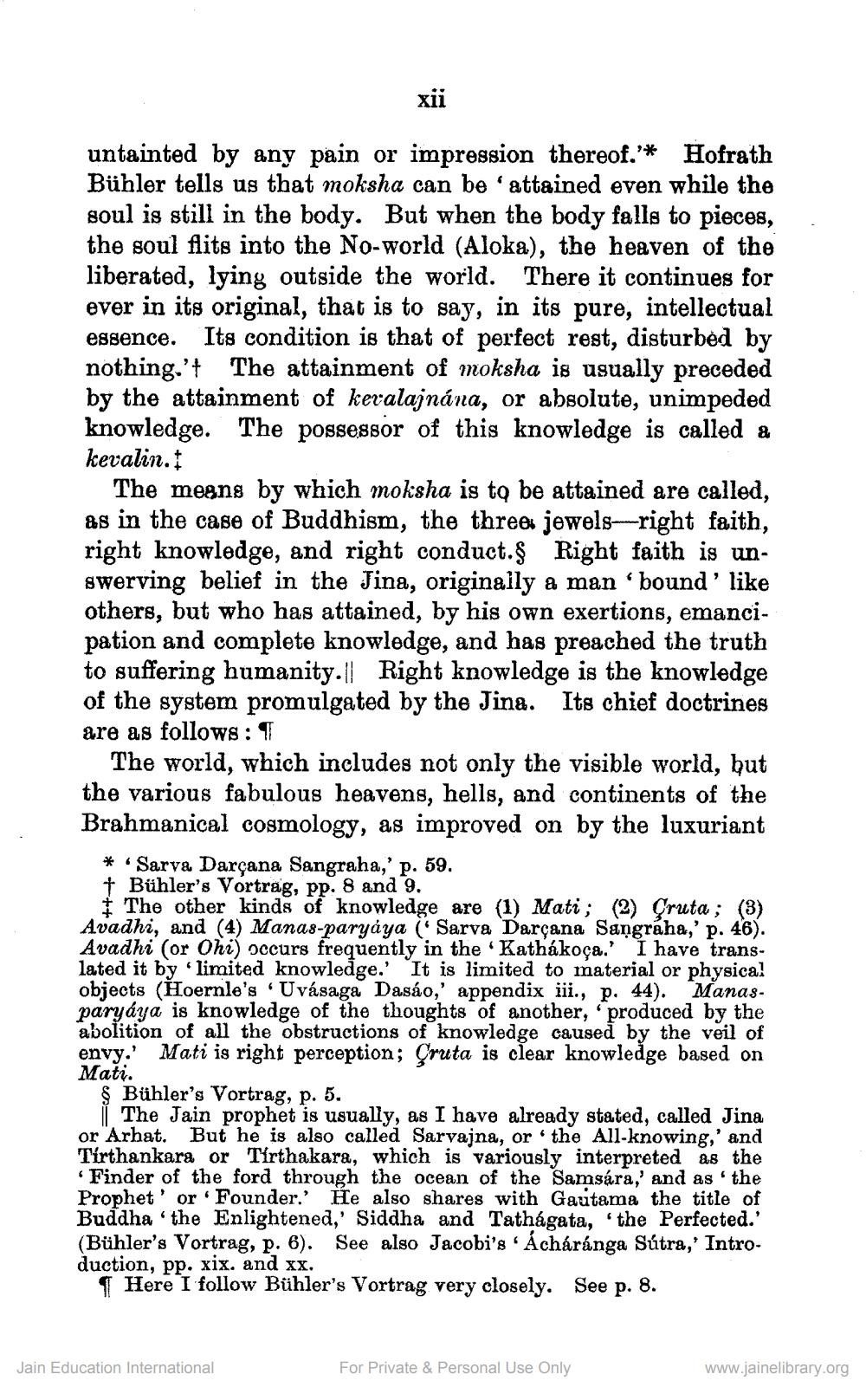________________
xii
untainted by any pain or impression thereof.'* Hofrath Bühler tells us that moksha can be attained even while the soul is still in the body. But when the body falls to pieces, the soul flits into the No-world (Aloka), the heaven of the liberated, lying outside the world. There it continues for ever in its original, that is to say, in its pure, intellectual Its condition is that of perfect rest, disturbed by nothing.' The attainment of moksha is usually preceded by the attainment of keralajnána, or absolute, unimpeded knowledge. The possessor of this knowledge is called a kevalin.‡
essence.
The means by which moksha is to be attained are called, as in the case of Buddhism, the three jewels-right faith, right knowledge, and right conduct.§ Right faith is unswerving belief in the Jina, originally a man 'bound' like others, but who has attained, by his own exertions, emancipation and complete knowledge, and has preached the truth to suffering humanity.|| Right knowledge is the knowledge of the system promulgated by the Jina. Its chief doctrines are as follows: T
The world, which includes not only the visible world, but the various fabulous heavens, hells, and continents of the Brahmanical cosmology, as improved on by the luxuriant
* Sarva Darçana Sangraha,' p. 59.
† Bühler's Vortrag, pp. 8 and 9.
The other kinds of knowledge are (1) Mati; (2) Cruta; (3) Avadhi, and (4) Manas-paryaya (Sarva Darçana Sangraha,' p. 46). Avadhi (or Ohi) occurs frequently in the 'Kathákoça.' I have translated it by 'limited knowledge.' It is limited to material or physical objects (Hoernle's Uvásaga Dasáo,' appendix iii., p. 44). Manasparyaya is knowledge of the thoughts of another, produced by the abolition of all the obstructions of knowledge caused by the veil of envy.' Mati is right perception; Cruta is clear knowledge based on Mati.
"
§ Bühler's Vortrag, p. 5.
The Jain prophet is usually, as I have already stated, called Jina or Arhat. But he is also called Sarvajna, or the All-knowing,' and Tirthankara or Tirthakara, which is variously interpreted as the 'Finder of the ford through the ocean of the Samsara,' and as the Prophet or Founder.' He also shares with Gautama the title of Buddha the Enlightened,' Siddha and Tathágata, the Perfected.' (Bühler's Vortrag, p. 6). See also Jacobi's Ácháránga Sútra,' Introduction, pp. xix. and xx.
Here I follow Bühler's Vortrag very closely. See p. 8.
Jain Education International
For Private & Personal Use Only
www.jainelibrary.org




